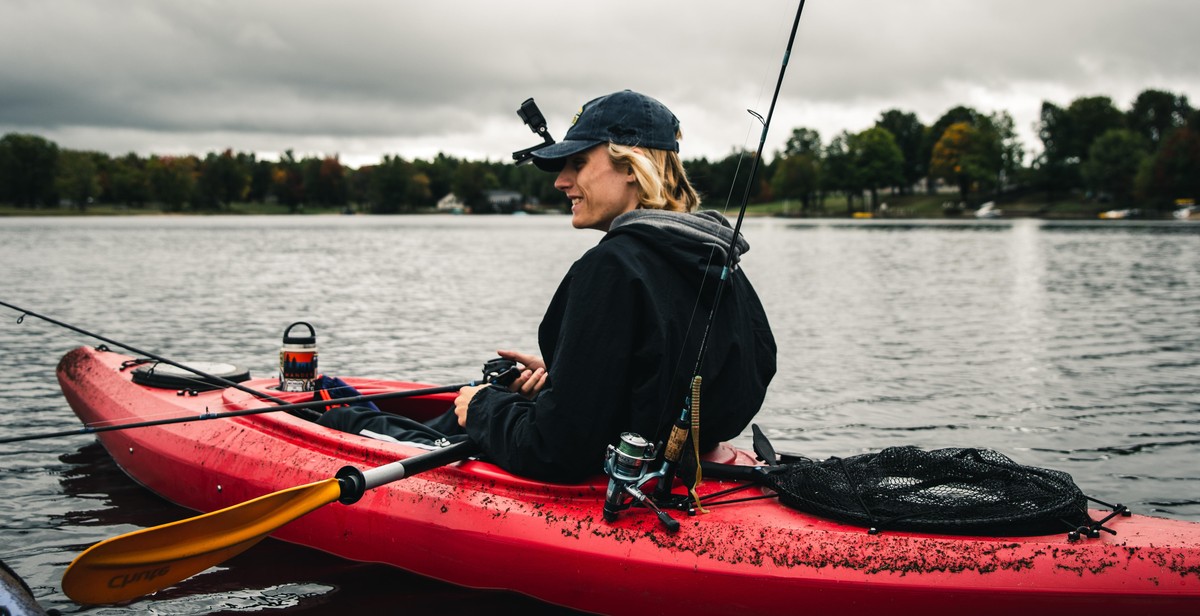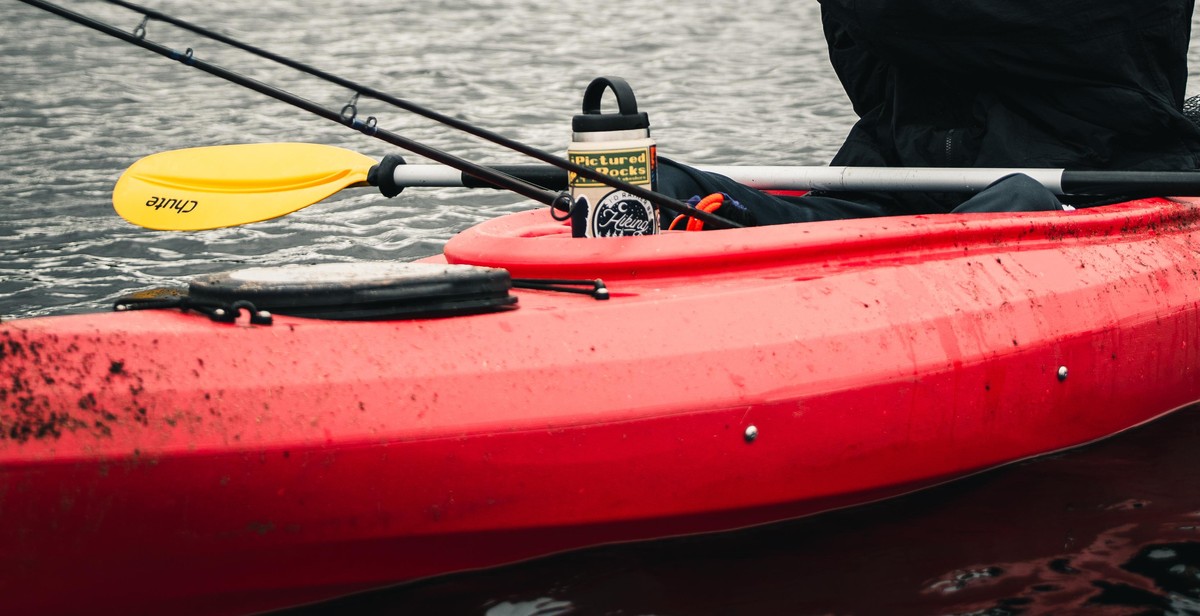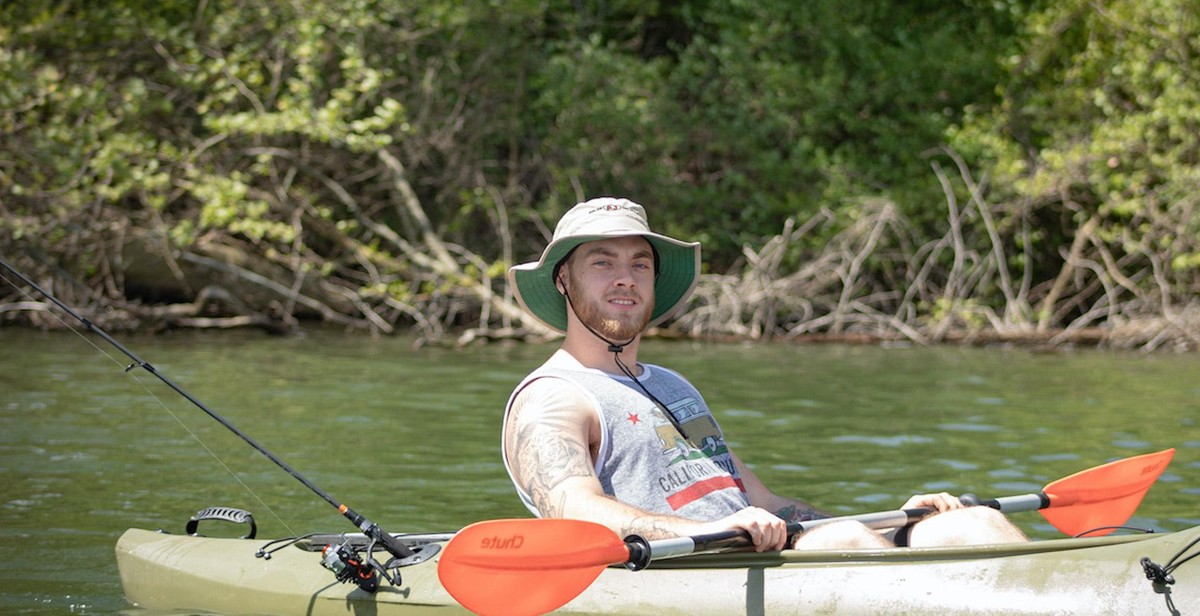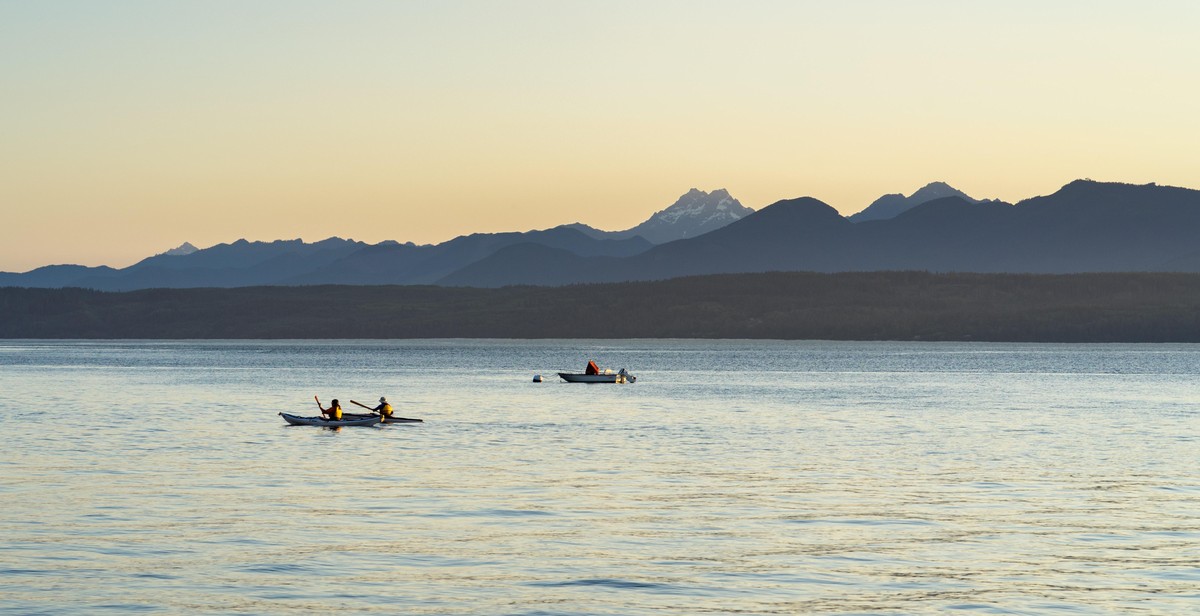How to Safely Fish from a Kayak on a Lake: Tips and Techniques for Anglers
Fishing from a kayak on a lake can be an exhilarating experience for anglers. Kayaks offer a unique opportunity to explore the water and catch fish in areas that may not be accessible by boat or on foot. However, fishing from a kayak can also be dangerous if proper safety precautions are not taken.
Why is Safety Important?
Kayaks are small and unstable vessels that can easily tip over, especially when an angler is reeling in a big fish. Falling into the water can be dangerous, especially if the water is cold or if the angler is not wearing a life jacket. Additionally, kayaks can be difficult to spot by other boaters, increasing the risk of collision.
Tips for Safe Kayak Fishing
Before heading out on a kayak fishing trip, it is important to take the necessary safety precautions. Here are some tips to ensure a safe and enjoyable experience:
- Wear a properly fitting life jacket at all times
- Check weather and water conditions before heading out
- Let someone know where you are going and when you will return
- Bring a whistle or other signaling device
- Stay visible by wearing bright clothing or using a flag
- Secure all gear to the kayak to prevent tipping
By following these safety tips, anglers can enjoy a successful and safe kayak fishing experience on a lake.

Why Fish from a Kayak?
Kayak fishing has become increasingly popular in recent years. It offers a unique and exciting way to fish that cannot be experienced from a traditional boat or from the shore.
Benefits of Kayak Fishing
One of the primary benefits of kayak fishing is its affordability. Kayaks are much cheaper than traditional boats, and they require less maintenance. They are also easier to transport and store, making them an ideal option for those who lack space or live in an apartment.
Kayaks also allow anglers to access areas that are difficult to reach by boat or on foot. They can easily navigate through shallow waters, narrow streams, and tight spaces, allowing anglers to explore new fishing spots that are not accessible by other means. This gives anglers the opportunity to fish in areas that are less pressured and have a higher chance of holding fish.
Another benefit of kayak fishing is the peace and serenity it offers. Kayaks are silent and do not disturb the water, making them ideal for fishing in calm waters. This allows anglers to enjoy the natural surroundings and wildlife without any distractions.
Challenges of Kayak Fishing
While kayak fishing offers many benefits, it also comes with its own set of challenges. One of the biggest challenges is stability. Kayaks can be unstable, especially in rough waters, which can make it difficult to fish comfortably. However, this can be mitigated by choosing a kayak with a wider base or by using stabilizers.
Another challenge is the limited storage space. Kayaks have limited storage space compared to traditional boats, which can make it challenging to bring all the necessary gear for a successful fishing trip. However, this can be overcome by packing efficiently and only bringing essential gear.
Lastly, kayak fishing requires physical exertion. Paddling a kayak for an extended period can be tiring, especially for beginners. However, this can be improved with practice and by choosing a kayak with a comfortable seat and efficient paddles.
Despite these challenges, the benefits of kayak fishing outweigh the challenges, making it a popular and rewarding way to fish.

Preparing for your Kayak Fishing Trip
Kayak fishing is a popular and exciting way to fish on a lake. However, before heading out, it’s important to properly prepare for your trip. This includes choosing the right kayak, gathering essential gear and taking safety precautions.
Choosing the Right Kayak
The type of kayak you choose will depend on your skill level, budget, and the type of fishing you plan to do. There are two main types of kayaks for fishing: sit-in and sit-on-top kayaks. Sit-in kayaks are more traditional and offer better protection from the elements, while sit-on-top kayaks are more stable and easier to get in and out of.
When choosing a kayak, make sure it is the right size for you and your gear. A kayak that is too small may be unstable, while a kayak that is too large may be difficult to maneuver. It’s also important to consider the weight of the kayak, as you will need to transport it to and from the lake.
Essential Gear for Kayak Fishing
Once you have chosen your kayak, it’s time to gather essential gear for your fishing trip. This includes a paddle, life jacket, fishing rod, bait and tackle, and a dry bag to keep your belongings safe and dry.
It’s also a good idea to bring a first aid kit, sunscreen, and insect repellent. Depending on the weather and time of day, you may also need to bring extra clothing, such as a rain jacket or warm layers.
Safety Precautions
Before heading out on your kayak fishing trip, it’s important to take safety precautions. This includes wearing a properly fitting life jacket at all times, checking the weather forecast, and telling someone where you will be and when you plan to return.
It’s also a good idea to practice getting in and out of your kayak, as well as how to maneuver it in the water. Avoid overloading your kayak with too much gear or trying to fish in rough or choppy waters.
| Item | Description |
|---|---|
| Paddle | Used to propel and steer the kayak |
| Life Jacket | Keeps you afloat and safe in case of an emergency |
| Fishing Rod | Used to catch fish |
| Bait and Tackle | Used to attract and catch fish |
| Dry Bag | Keeps your belongings safe and dry |
By following these tips and taking the necessary precautions, you can have a safe and enjoyable kayak fishing trip on a lake.

Techniques for successful kayak fishing
Locating fish on a lake
One of the most important techniques for successful kayak fishing is to locate the fish on the lake. This can be done by looking for signs of fish activity such as jumping fish or ripples on the water’s surface. Additionally, using a fish finder can help you locate the fish quickly and accurately.
Casting techniques from a kayak
Casting from a kayak can be challenging, but there are techniques that can help. First, make sure to keep your balance by sitting in the center of the kayak. When casting, use a sidearm motion to avoid hitting your kayak or the water. It’s also important to use a shorter rod and a lighter lure to make casting easier.
Retrieving techniques
Retrieving your lure is just as important as casting it. One technique that can be effective is to use a slow and steady retrieve, which can mimic the movement of prey and entice fish to bite. Another technique is to use a stop-and-go retrieve, where you pause and then reel in your lure to create a more erratic movement.
| Technique | Description |
|---|---|
| Slow and steady | A constant, slow retrieve that mimics the movement of prey. |
| Stop-and-go | A retrieve where you pause and then reel in your lure to create a more erratic movement. |
- Use a sidearm motion when casting from a kayak.
- Keep your balance by sitting in the center of the kayak.
- Use a shorter rod and a lighter lure to make casting easier.
- Look for signs of fish activity to locate the fish on the lake.
- Use a fish finder to locate the fish quickly and accurately.
- Experiment with different retrieval techniques to see what works best for the fish in your area.

Tips for a Safe and Enjoyable Kayak Fishing Experience
Paddling Techniques
- Start with the right equipment: Use a paddle that is the right length and weight for your size and strength.
- Use your core: To avoid fatigue, use your torso to power your strokes instead of just your arms.
- Alternate sides: To maintain a straight course, switch sides every few strokes.
Dealing with Wind and Waves
- Face the wind: When paddling into the wind, position your kayak so the bow is facing directly into the wind.
- Use a rudder or skeg: If your kayak has a rudder or skeg, deploy it to help you maintain course in windy or choppy conditions.
- Stay low: To maintain stability in waves, keep your center of gravity low by sitting close to the kayak’s seat.
Maintaining Balance on a Kayak
- Keep your feet and knees together: This will help you maintain balance and control.
- Use your paddle: Holding your paddle across the kayak can help you maintain balance in choppy conditions.
- Don’t overreach: When reaching for your gear or trying to cast, avoid leaning too far to one side.
Avoiding Common Mistakes
- Overloading your kayak: Be mindful of your weight and the weight of your gear to avoid capsizing.
- Ignoring weather conditions: Always check the weather forecast before heading out and be prepared for changing conditions.
- Not wearing a life jacket: Always wear a properly fitting life jacket when kayaking, even in calm waters.
| Tip | Description |
|---|---|
| Use a paddle leash | A paddle leash will keep your paddle secure and prevent it from floating away if you accidentally drop it. |
| Bring a whistle | In case of emergency, a whistle can be used to signal for help. |
| Stay hydrated | Bring plenty of water and stay hydrated, especially on hot days. |

Conclusion
Fishing from a kayak on a lake can be a thrilling experience for any angler. However, it is important to prioritize safety while out on the water. By following the tips and techniques outlined in this article, you can ensure that your kayak fishing trips are enjoyable and accident-free.
Key Takeaways
- Always wear a personal flotation device and bring safety equipment such as a whistle and a first aid kit.
- Check the weather forecast and water conditions before heading out on the lake.
- Know your limits and don’t take unnecessary risks.
- Use proper fishing techniques and equipment to increase your chances of success.
- Be respectful of the environment and other boaters on the lake.
Final Thoughts
By taking the necessary precautions and practicing safe kayaking and fishing habits, you can enjoy the beauty and excitement of lake fishing from a kayak. Remember to always prioritize safety and respect for the environment, and you’ll be sure to have a great time on the water.
